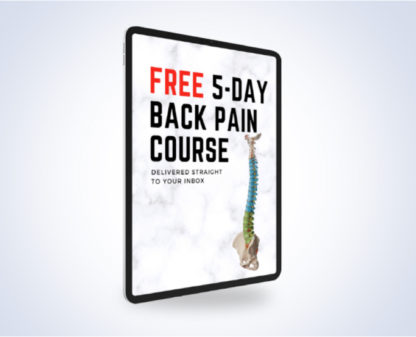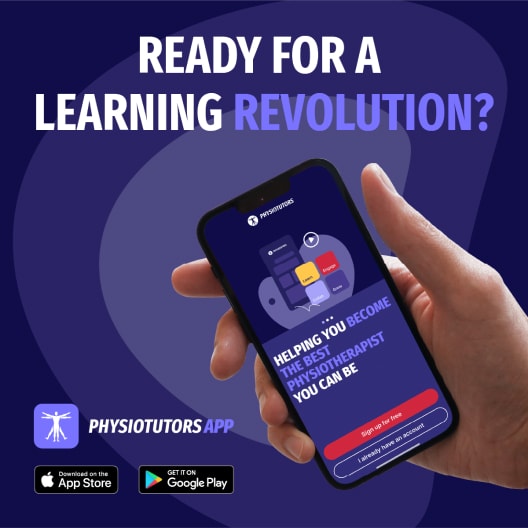Neuromuscular and Resistance Training in CLBP Combined - Better than Resistance Training Alone?

Introduction
Chronic low back pain (CLBP) is a complex disorder, frequently accompanied by physical and psychological issues. Treatment with resistance training has been shown to effectively reduce CLBP symptoms (Owen et al., 2020). However, neuromuscular impairments, notably in the lumbar extensors, have been identified as a contributor to CLBP-related disability. This randomized controlled study (RCT) sought to determine whether adding lumbar neuromuscular control retraining exercises to a 12-week resistance training program would improve results, particularly in terms of disability reduction, when compared to resistance training alone. Let’s take a closer look at the protocol for resistance training in CLBP that the current authors used.
Methods
In this randomized controlled trial, two parallel groups were investigated. Participants between 18 and 65 years with at least 3 months of low back pain (with or without lower limb pain) were included. An Oswestry Disability Index score of at least 21%, indicating moderate or severe disability, was required.
Upon inclusion, the participants were randomized to the intervention group performing neuromuscular and resistance training or to the control group performing resistance training only.
Over 12 weeks, they participated in 24 exercise sessions (2 per week) of around 30 minutes each. A protocol-trained physiotherapist supervised all sessions.
Exercises
The resistance training consisted of lumbar extension exercises combined with at least one other, such as leg press, trunk flexion, or hip extension. The load for resistance exercises was set at 85% of each participant’s maximum voluntary isometric contraction (MVIC). Exercises were performed repetitively for 2 minutes or until fatigue.
The neuromuscular exercises were targeted to improve lumbar extension control. These were performed in the intervention group before the resistance training. In a seated position in a dynamometer machine and using visual feedback, they were instructed to isometrically push their back against the backrest at 20% to 50% of their MVIC. In each session, three repetitions were performed at 3 different frequencies (0.05 Hz, 0.08 Hz, and 0.14 Hz).
The primary outcome was the Oswestry Disability Index (ODI), a measure of disability specifically validated for CLBP. This was measured at baseline, 6, and 12 weeks. Secondary outcomes included:
- Pain intensity (Numeric Rating Scale)
- Kinesiophobia (Tampa Scale for Kinesiophobia – 17)
- Pain Self-efficacy (Pain Self-Efficacy Questionnaire)
- Physical activity levels (International Physical Activity Questionnaire – Short Form)
- Lumbar extension strength, force-matching error, and multifidus muscle thickness
Results
Sixty-nine participants were recruited. Thirty-three were randomized to the intervention group (resistance training plus neuromuscular control) and thirty-six were randomized to the control group (resistance training only). Nine participants were lost to follow-up and were excluded from the primary analysis. As such, 30 participants were analyzed in each group. Their baseline characteristics were similar.

Both groups demonstrated significant improvements in ODI scores, with clinically meaningful reductions (control group: 22.3%; intervention group: 25.9%) by 12 weeks. However, no significant between-group difference was found (mean difference at 12 weeks: −4.39 points, 95% CI: −10.19 to 1.41); indicating no added value for neuromuscular exercises on top of resistance training in CLBP.
The secondary outcomes of pain intensity and kinesiophobia improved but pain self-efficacy stayed more or less the same. The secondary outcomes supported the findings of the primary analysis. None of the secondary outcomes achieved meaningful between-group differences.
Improvements in lumbar extension strength and force-matching error were observed in both groups, but again, no significant differences were found between the NM and ST groups at 12 weeks.

Both groups achieved equal improvements in disability as can be seen in the within-group outcomes.

Questions and thoughts
Both resistance training in CLBP and resistance training with neuromuscular exercises yielded the same results. This translates to an absence of additional benefits for adding neuromuscular training. This is good news since it tells us that resistance training may yield important improvements without needing specialized dynamometer devices for neuromuscular training. Rather than using specialized equipment, it seems that progressive resistance training is more important. Also, this trial used the resistance training protocol of the American College of Sports Medicine to prescribe individualized exercise progressions and progressive overload.
The intervention group participated in slightly longer treatments compared to the group doing only resistance training. To equalize the exercise time, the authors ensured that participants in the strengthening group performed additional lumbar extension resistance exercises at 50% of their MVIC. Another good aspect was that the both groups used the same exercise equipment. This way, it was tried to provide equal treatments.
In the article’s introduction, the authors mention that different physical activity interventions that specifically target physical impairments do not show superiority over each other. They hypothesise that this is due to the poor association between CLBP-related impairments and disability. However, this study focused on a ‘newly’ identified problem: lumbar extensor neuromuscular control disorders. The analyses found no significant effect of motor control training of the lumbar extensor muscles. We should stop trying to correct incorrect movement patterns or insufficient muscle coordination. In contrast, I think we should see our treatment outcomes more in the positive impact of exercise and physical activity on CLBP-related factors such as fear-avoidance, strength, confidence and expectations, rather than in ‘correcting movements’ or ‘fixing impairments’.
Talk nerdy to me
The Oswestry Disability Index (ODI) has no clear minimal clinical important difference (MCID) Schwind et al., (2013). Several cut-offs have been proposed but to date, there is no consensus. Yet, both groups decreased their ODI score to below 20%. The authors who created the ODI proposed that a score below 20% reflects no disability. As such, we can propose that this trial was successful in decreasing disability.
Kinesiophobia remained on the higher end around 30 in both groups, despite the improvements in disability. A score exceeding 37 is considered high. This may need careful attention when you treat a patient with similar characteristics. However, they had high self-efficacy scores at baseline, tackling fear avoidance may be one of the most promising treatment strategies for sustained treatment success. Perhaps more than resistance training is needed for people with severely impaired cognitive-emotional and psychosocial factors. But if you apply resistance training, there is no need to add neuromuscular exercises, as this study has shown.
Natural recovery was unlikely according to the authors, but since no real control group (doing nothing) was included, this can not be concluded.
Nine participants were lost to follow-up and were not analyzed. This is a per-protocol analysis but intention-to-treat analyses are preferred since per-protocol analyses may overestimate treatment effects. However, a sensitivity analysis was performed including everyone randomized and this showed no differences.
The authors did not interpret the secondary outcomes by statistical significance but merely regarded them as supporting. Further, the interpretation did not rely on within-group improvements, like we sometimes see when a lack of between-group difference is observed.
At baseline, participants were stratified according to their baseline ODI scores into a moderate and severe disabled group. All models were adjusted for the baseline ODI scores. Accounting for baseline ODI scores provides a more realistic assessment of how each group responds to the intervention. This adjustment helps to compensate for potential bias caused by unequal starting positions in disability and assures that the observed outcomes are due to the intervention rather than pre-existing inequalities between participants.
Take home messages
The data show that physiotherapists may not need to incorporate particular neuromuscular retraining for all patients with CLBP. The findings suggest that resistance training in CLBP alone is adequate to bring about significant improvements in disability.
Useful tools
- Oswestry Disability Index
- Tampa Scale of Kinesiophobia-17
- Pain Self-Efficacy Questionnaire
- International Physical Activity Questionnaire – Short Form
Reference
MASSIVELY IMPROVE YOUR KNOWLEDGE ABOUT LOW BACK PAIN FOR FREE
5 absolutely crucial lessons you won’t learn at university that will improve your care for patients with low back pain immediately without paying a single cent



